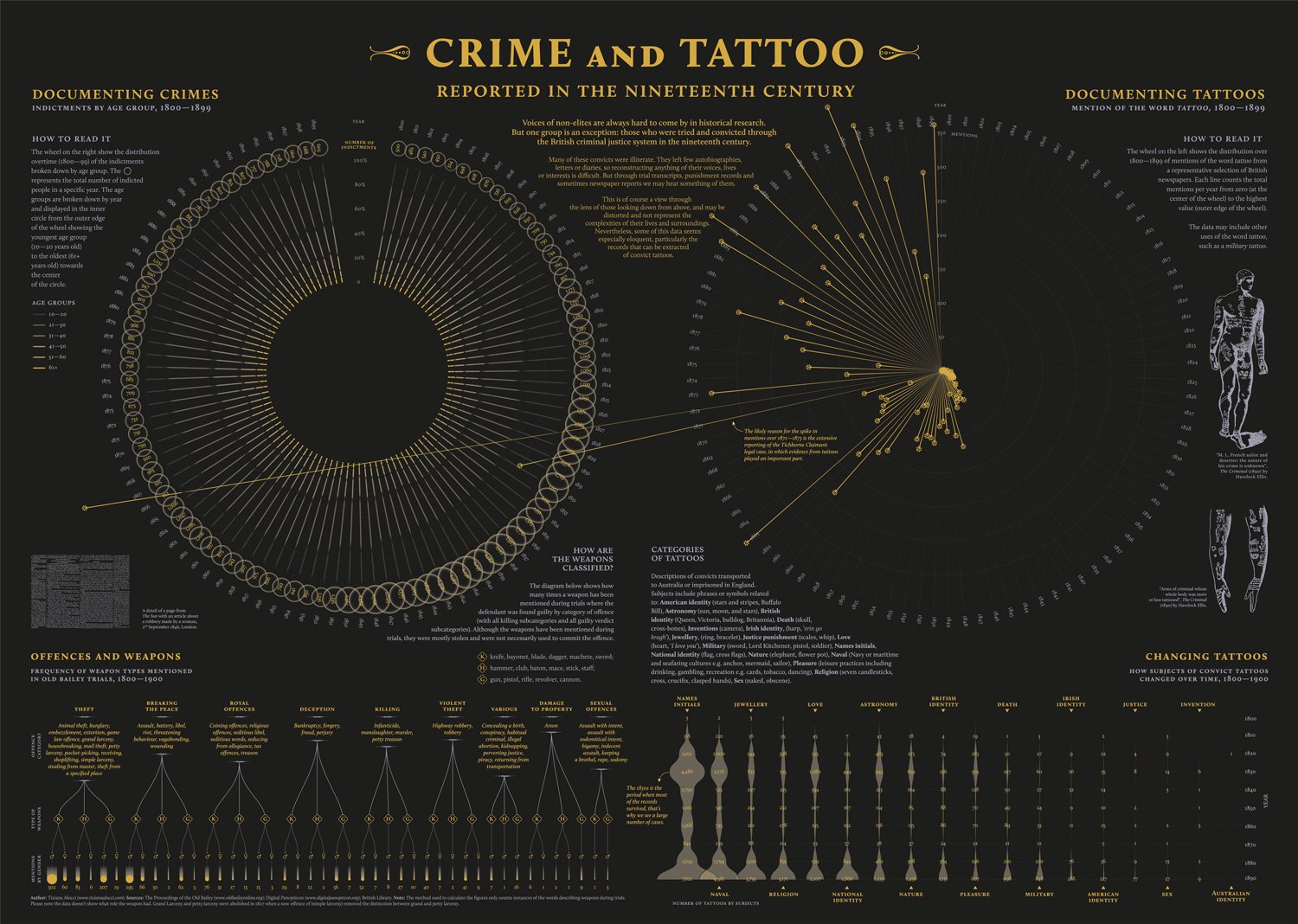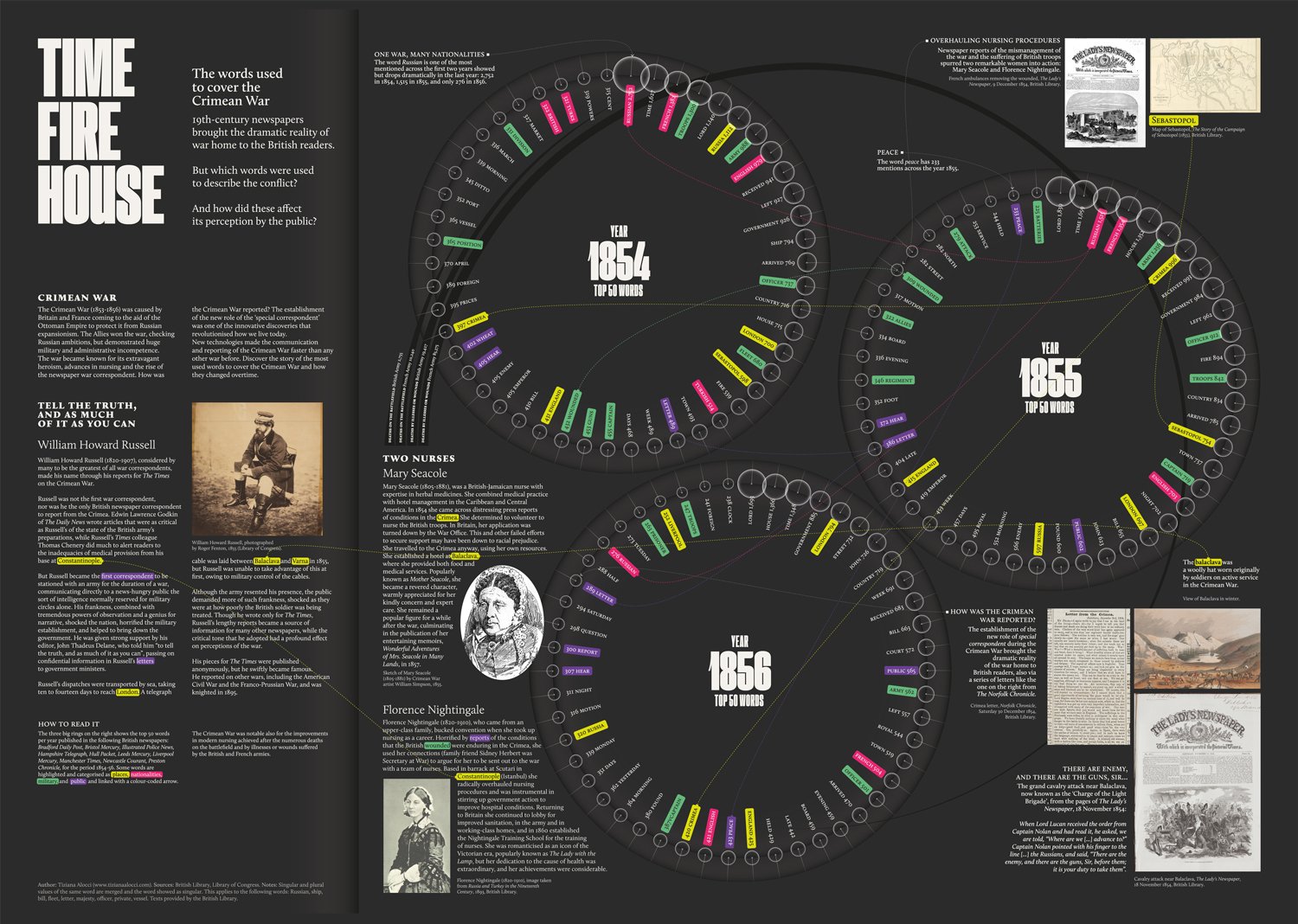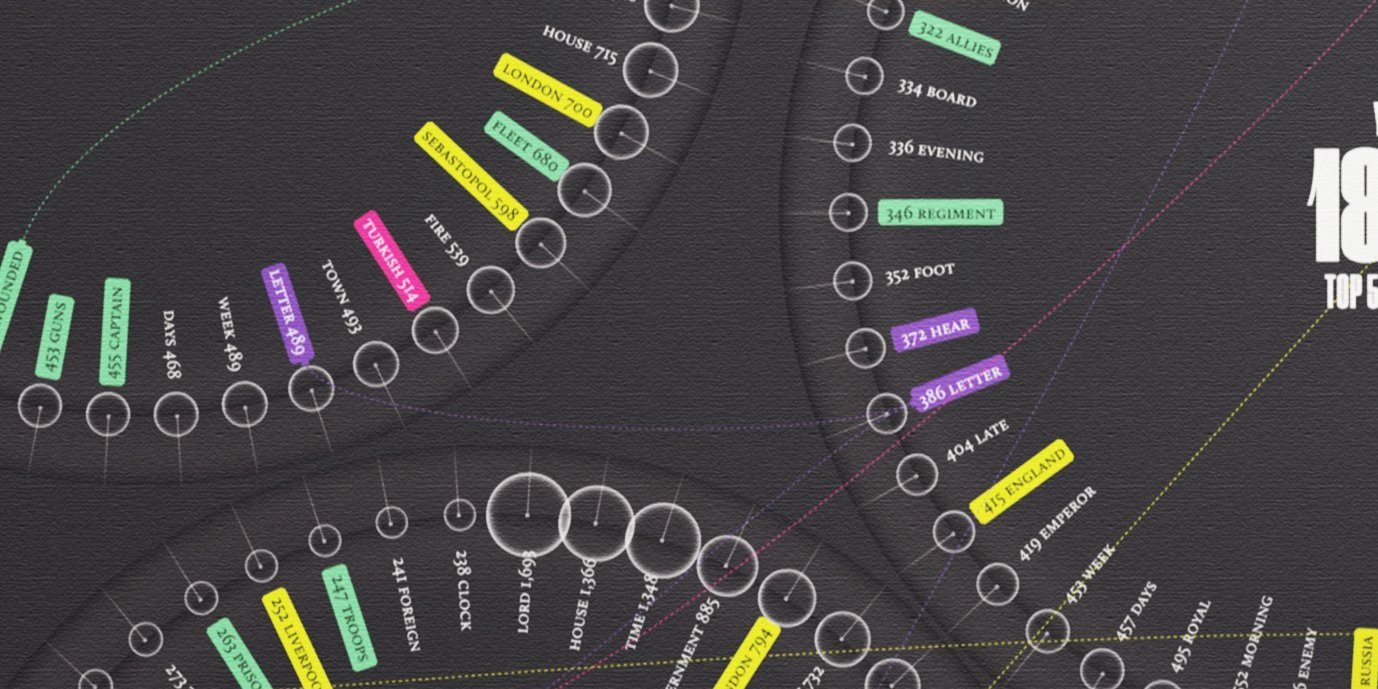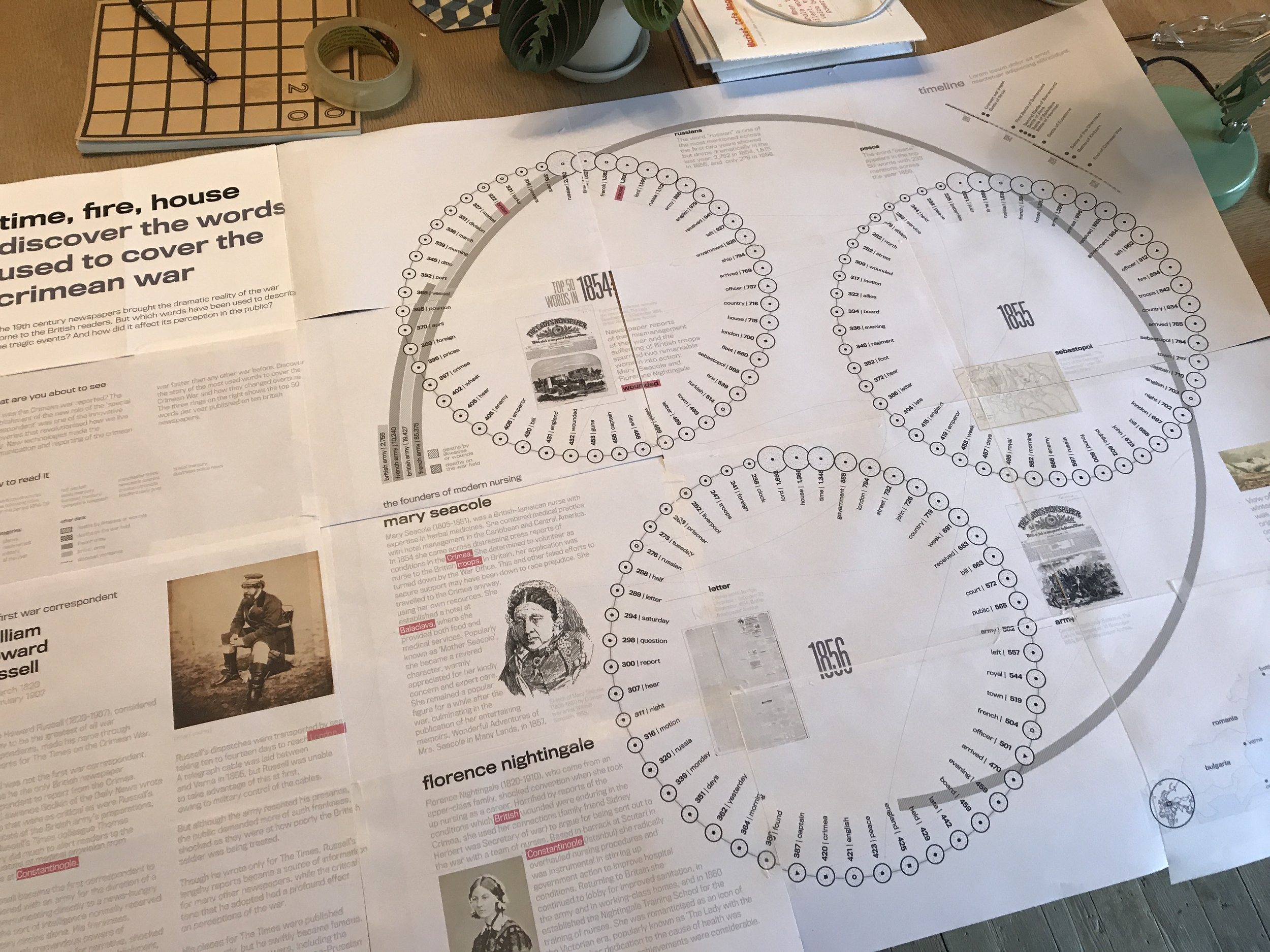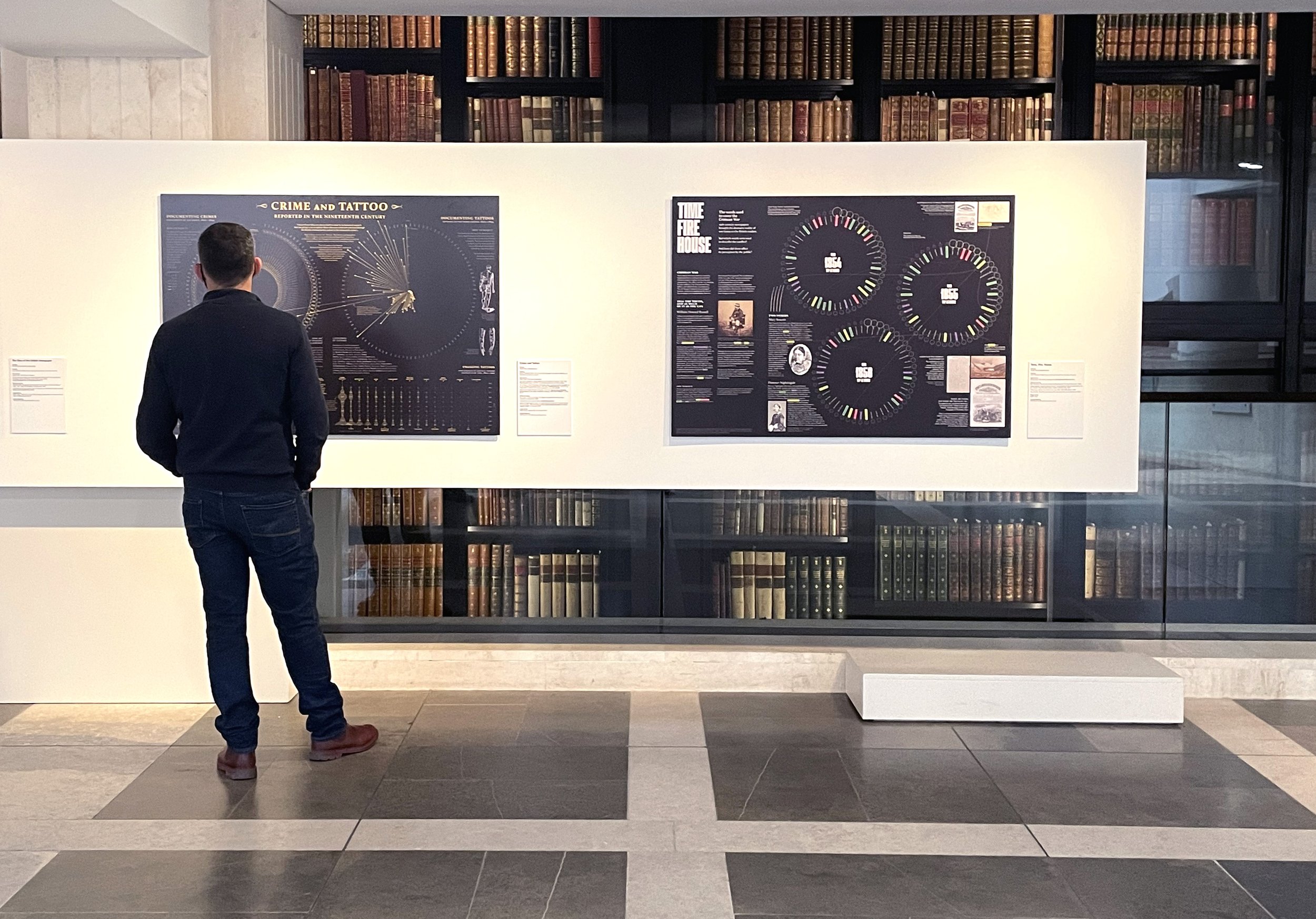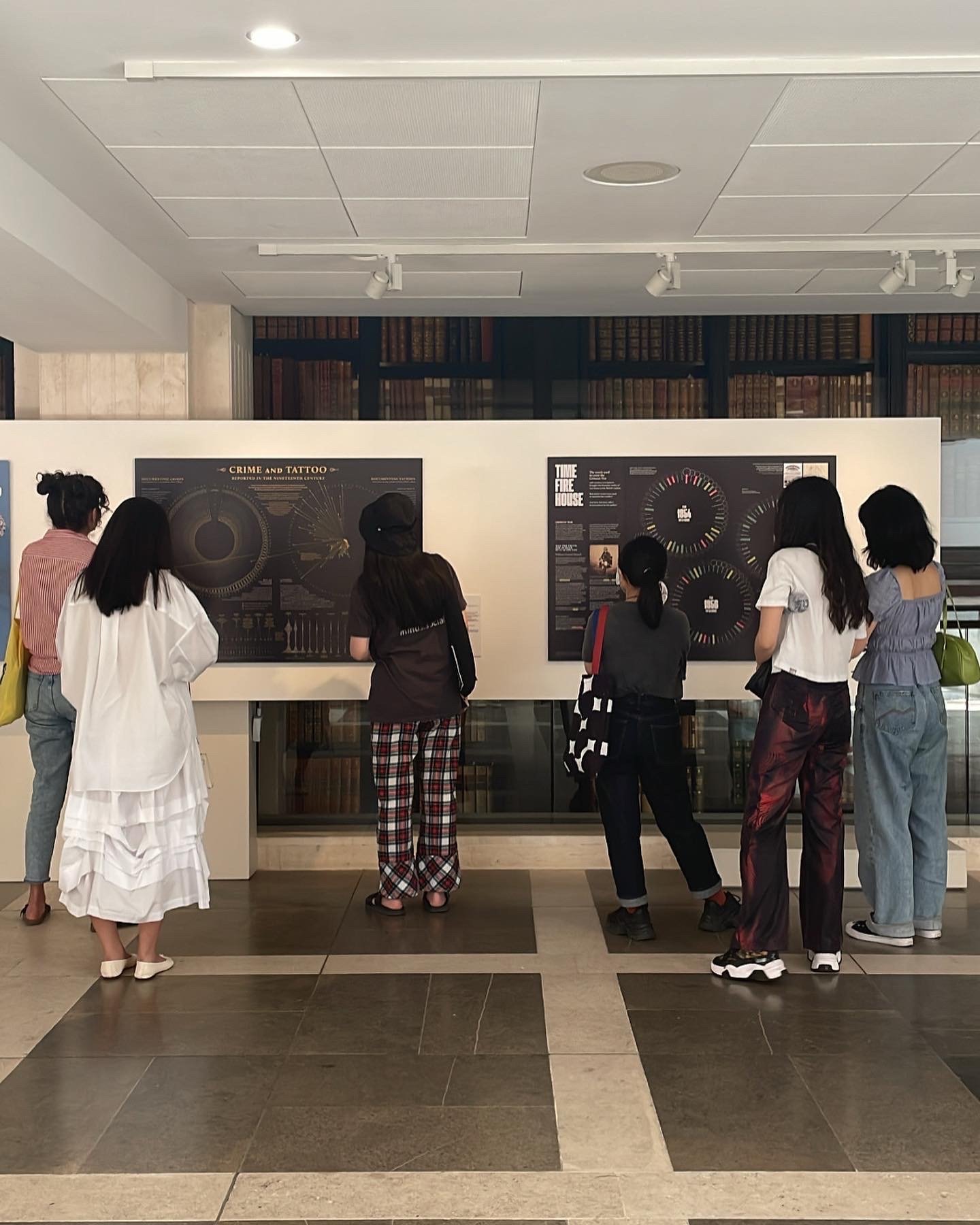The British Library – Visualising Victorian News Exhibition
Commissioned by The British Library in 2019, Visualising Victorian News came together as an exhibition using data from digitised British Library newspapers to explore themes from 19th-century news and reimagine aspects of British 19th-century history. The show included artworks Crime & Tattoo and Time, Fire, House, which looked into the world of convict tattoos, and the language used to describe the Crimean War respectively.
The artworks shed light onto the broader exhibition's rich exploration of Victorian news, and newly brought the art of historical data visualization into the walls of The British Library.
Crime and Tattoo
The work Crime & Tattoo reconstructed criminals' lives through the display of tattoo art, visualising an enduring and often the stereotyped relationship between the two. Data from The Digital Panopticon project, which details 76,000 convict tattoos, supported the conception and research framework for the artwork.
Tiziana Alocci, Crime and Tattoo, 2019; Courtesy of British Library.
Celestial maps such as John Seller's 1675 edition, inspired the work’s structure, dividing the composition into crime stories on the left and tattoo displays on the right.
John Seller, Map of the two hemispheres of the heavens, 1675.
Time, Fire, House
Time, Fire, House was created as a means to visualise language used around reports of the Crimean War within 19th-century newspapers, highlighting terms shaping British readers' war perceptions. Mechanical watch gears inspired the artwork's design, with each circle representing a year of war. The coverage’s fifty most frequently used words were extracted and coloured by category (places, nationalities, casualties, military actions, and public affairs), each illuminating the evolving focuses of wartime reportage.
Tiziana Alocci, Time, fine, house, 2019; Courtesy of British Library.
Tiziana Alocci, detail of ‘Time, Fire House’, 2019; Courtesy of British Library.
Preparation sketches and final installation

